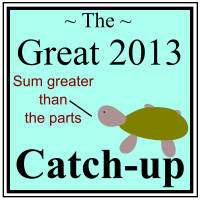Dinosaurs left plenty of bones, but some also created another type of fossil: preserved track marks. A handful of these tracks were made from swimming dinosaurs, and a new paper in the Chinese Science Bulletin – A new Early Cretaceous dinosaur track assemblage and the first definite non-avian theropod swim trackway from China (open access) – reports on the discovery of one such find.
Timothy L. Clarey’s new article on these tracks is called Dinosaurs Swimming out of Necessity, but the “necessity” conclusion is entirely his own. His article is quite similar to one from Brian Thomas published in January which we looked at in Stampede? For instance both Thomas and Clarey chose to claim in their opening paragraphs that, in the present day, it is very difficult to form footprints that will eventually be preserved as fossils – here’s Clarey’s opener:
What’s so fascinating about dinosaur tracks? Maybe it’s because their many mysteries beg for solutions. For instance, because tracks in mud are so short-lived today, how did dinosaur tracks ever preserve in the first place? Newly described prints bolster biblical creation’s explanation of dinosaur footprints.
It may be true that it’s hard to preserve footprints in mud, but it’s not so improbable once you consider the shear number of footprints that would have been made over the more than 180 million years of the Mesozoic Era. Clarey never does explain, meanwhile, how “biblical creation” suddenly makes preservation so much easier – not even a “footprints need to be preserved rapidly” claim (which is false, by the way). Continue reading →
 In Circular RNAs Increase Cell Bio-Complexity (5 April 2013) Jeffrey Tomkins makes the arguement we’ve seen so many times even in the last week: something has been found to be biologically functional, therefore “bio-complexity” has increased, therefore design, therefore God.
In Circular RNAs Increase Cell Bio-Complexity (5 April 2013) Jeffrey Tomkins makes the arguement we’ve seen so many times even in the last week: something has been found to be biologically functional, therefore “bio-complexity” has increased, therefore design, therefore God.




